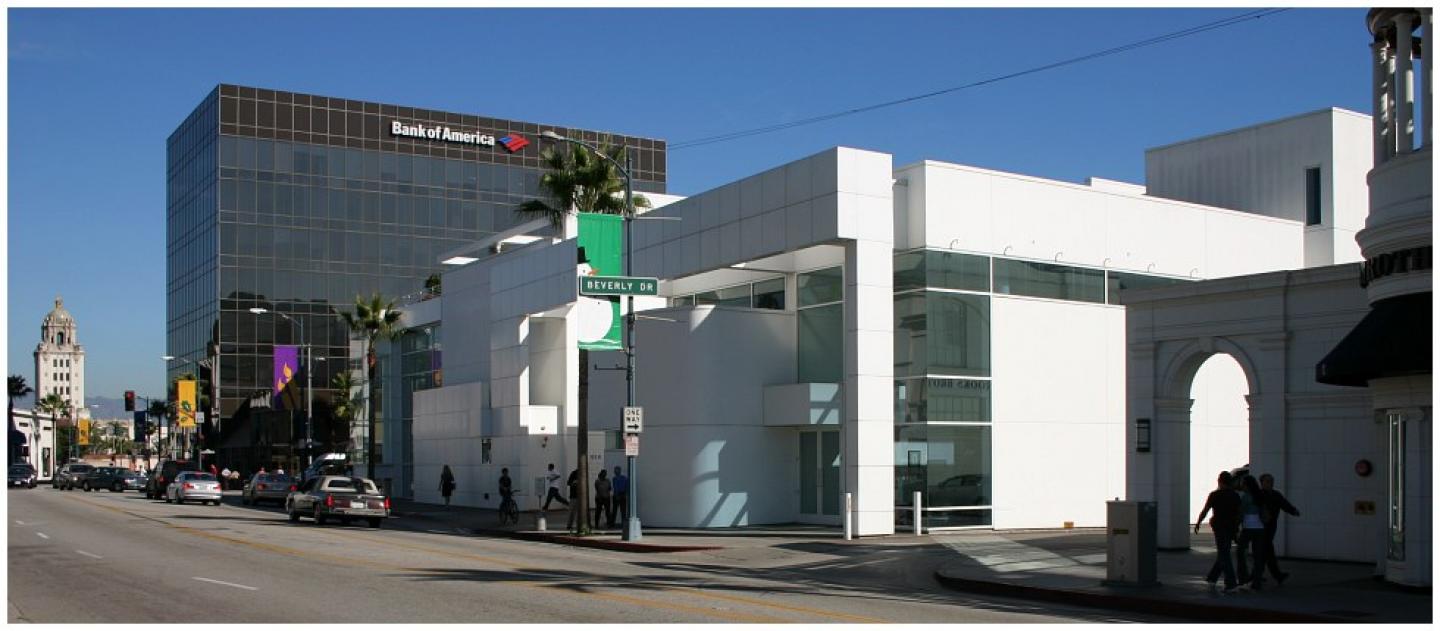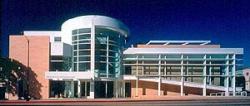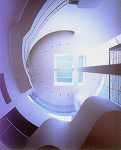Museum of television&radio
Beverly Hills,California
The West Coast building for the Museum of Television and Radio stands on a prominent site in the heart of Beverly Hills. Located at the southwest corner of the intersection of Beverly Drive and Little Santa Monica Boulevard, it is a luminous, welcoming presence at a point where commercial and residential districts meet. The facility is clad in white metal panels and stucco, pale travertine marble and glass.The three-story building reuses part of an existing structure that until 1993 housed a bank; this building has been connected to an adjacent building and renovated to accommodate the Museum's offices. With generally transparent facades on each of its two public sides, the Museum accommodates appropriate low light facilities for the exhibition of electronic mediums while also achieving a level of transparency: visitors are provided views onto the street and beyond from the Museum's major public spaces, while passerby outside are able to observe plays of light and the movement of people within the building. This permeability and vibrant dialogue between interior and exterior lend a particularly open, Californian atmosphere.The building's facade is set back slightly from the property line, creating an outdoor public space: a small granite-paved promenade and reflecting pool are shadowed by a screen of horizontal sunshades mounted on the entrance facade. The Museum's main entrance faces this public forecourt.Visitors enter a two-story, skylit rotunda where an information desk sits before a wall of programmed television monitors. Suffused with natural light, this lobby rotunda serves as a hinge for the building's most important public spaces, a ground floor exhibition area, a 150-seat theater, a radio listening room, flexible classrooms and the Museum's shop are circled by ramps leading to study areas above. From the lobby, visitors circulate to the second floor via a ramp into the exhibition area. From here, visitors can look back over the ground floor before ascending to the library or video console room on the second floor.The building's private spaces, including a board room and conference room, are located on a mezzanine level, accessed by a stairway from the second floor. Above this top level, a room garden with views over the palms of Beverly Hills is available for Museum receptions and outdoor events.A ramp to parking separates the office wing from the building's main body.The Museum of Television and Radio in Beverly Hills opened to the public in March 1996. The Museum's Manhattan building, located on West 52nd Street, was designed by renowned architect Philip Johnson.
1994
1996






